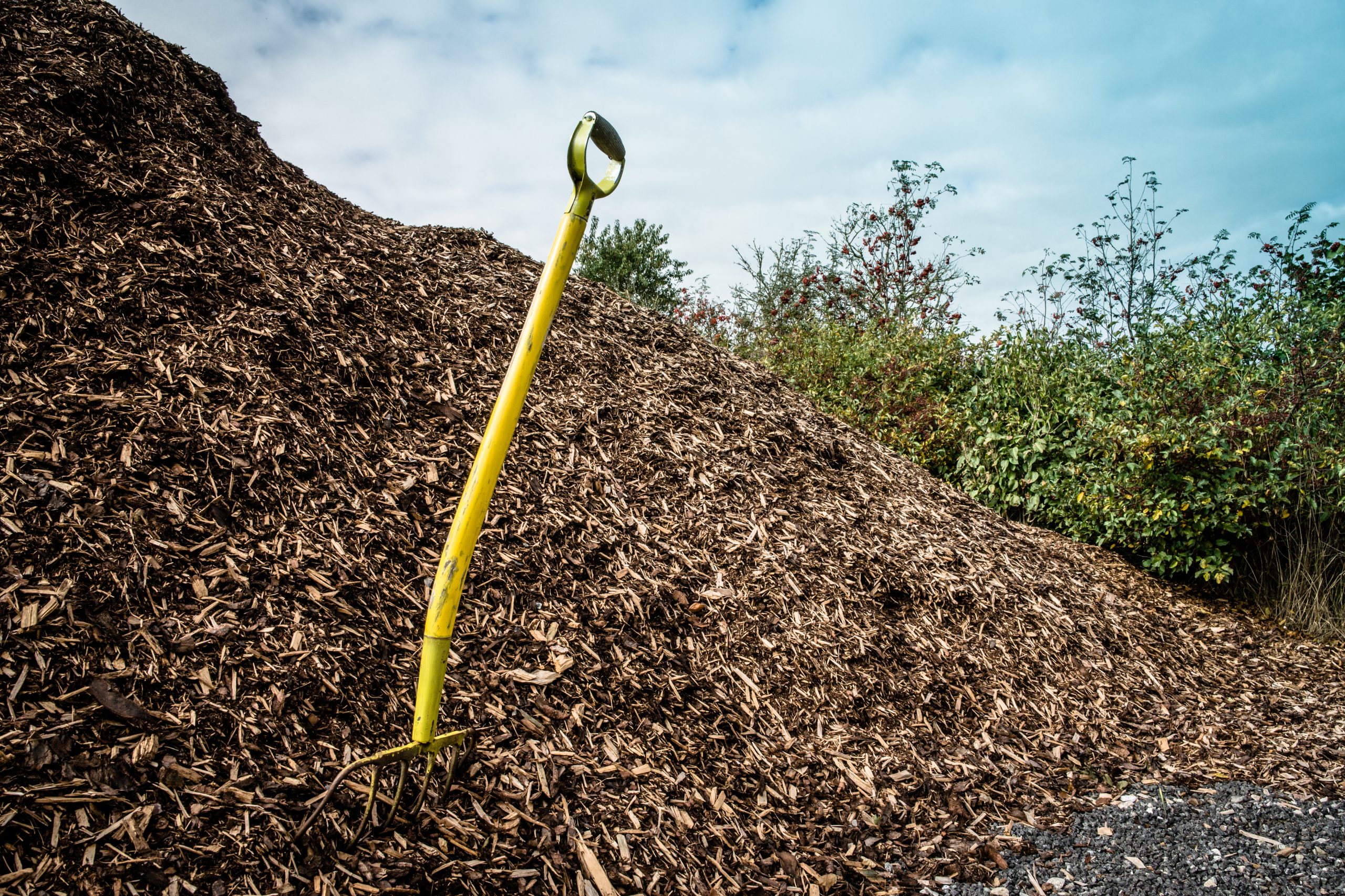Mulch has a wide variety of uses in the garden. Generously mulch around your veggie plants to conserve moisture and protect them from frost, use it to snuff out weeds and line walkways, and watch it compost naturally to improve the quality of your soil.
But mulch often costs anywhere from $17 to $68 per cubic yard, which quickly adds up if you have a large space to mulch.
Read on for our 7 favorite ways to get mulch completely for free, plus the pros and cons of each!
Rake up autumn leaves (or “leaf” them be)
The leaves dropped by the trees in your yard act as a valuable source of mulch. I like to rake up the leaves on my driveway and add it to the soil of my raised beds to increase the biological material. It also acts as a nesting place for critters, insects, and pollinators, so many gardeners suggest leaving the leaves where they fall in your lawn and yard until after the ground has reached 50 degrees F in the spring.
Pros: autumn leaves are nature’s mulch and break down quickly to make nutritious soil — and it acts as a great insulator from the cold.
Cons: leaf mulch can easily blow away and decomposes quickly (which is great for the nutrients of the soil, but you will have to reapply it more frequently!)
Newspaper or cardboard boxes
If you are setting up a gardening space in a new home, you’re in luck! You likely already have a valuable and effective mulch: cardboard moving boxes. Cardboard and paper waste can be great groundcover, weed killer, and compost. Make sure that you peel away and discard any tape and non-compostable materials before using cardboard as mulch.
Pros: This is one of the most accessible forms of mulch, especially if you only need a small quantity or don’t have a large yard with other natural forms of yard waste mulch.
Cons: If you need to mulch a large area you may not have enough on hand. You might also want to avoid using dyed pages (like colored newspapers or magazines) because the inks and dyes are not made with food or plant-safe ingredients.
Aged grass clippings
Last year’s yard waste makes an incredible mulch today! Set aside your grass clippings in a corner of your yard, and use them later on as a groundcover or mulch. Note: when it is first cut it can be too high in nitrogen and it may burn your plants, so aging it is a better bet.
Pros: it can be difficult to dispose of grass clippings, so this solves two problems!
Cons: if you don’t have a lawn, you may be out of luck! But you can ask a friendly neighbor.
Pet litter and bedding
If you have pet rabbits, rats, or guinea pigs, you have a great free source of mulch and compost! You can use the discarded litter, “presents” and all in your garden as mulch. Use litter with the awareness that animal waste can be very high in nutrients: bunny poop is very high in nitrogen and phosphorous, so make sure that your soil is well balanced with the correct nutrients. Some people also recommend allowing the pet litter to compost before adding it to your garden.
Pros: the animal waste and compostable betting makes an incredibly nutrient-dense mulch.
Cons: if you don’t own rodents, you may need to ask a friend for their pet waste!
Your local forestry department
Many local forestry departments and cities offer a free mulch pickup spot where you can bring a truck and haul away as much free mulch as you would like. My local forestry department even has a “mulch cam” where you can view the current mulch supply to make sure that it’s stocked before you head over for pickup.
Pros: free wood chip mulch in large quantities, woohoo!
Cons: You will have to haul it away yourself. If like me, you don’t have a truck, you might have to rent a truck ($$!) or borrow one from a friend.
Local gardening or “buy nothing” Facebook groups
Facebook groups can be a huge asset in your journey to building a free garden. Join local gardening and “buy nothing” Facebook groups by searching [my city] + “buy nothing” or [my area] + gardening.
You might catch posts by nearby community members who have extra mulch to give away, or you can create a post to see if anyone has extra mulch that they are willing to share with you for free.
Pros: You can get free mulch, plus make local friends with common interests!
Cons: Make sure you use caution when meeting with strangers from the internet – and people from Facebook can be notoriously unreliable.
Get free mulch delivered through ChipDrop
ChipDrop is a service that coordinates free deliveries of wood chip mulch to your home from local arborists. The service is completely free for gardeners, and it costs $20 for the arborists providing the mulch. You can request a free delivery, or you can pay a credit to the arborists in increments of $20 to help them cover their costs.
This service doesn’t allow narrow control of the delivery, so you may receive anywhere from 4-20+ cubic yards of mulch and can’t set a specific delivery date.
Pros: You can get a large quantity of mulch delivered straight to your home for free.
Cons: You can’t schedule delivery, so you may be waiting weeks (and you don’t know when it’s going to show up!) This can make it hard to plan. If you only need a small amount of mulch, this may not be the best choice since a large quantity is delivered.

